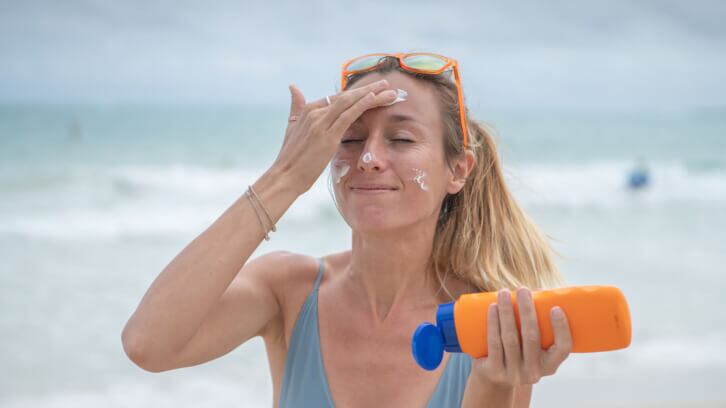Ultimately aiming at zero waste for the product's entire life cycle, brands that commit to circular beauty have their work cut out. But the potential dividends are significant.
We spoke to Amarjit Sahota, Founder of Ecovia Intelligence, to find out how the circular beauty concept is evolving, what brands are doing in this space, and what attracts consumers to beauty and personal care products with these types of claims.
CDU: What does the circular concept mean to the beauty industry?
Amarjit Sahota (AS): The circularity concept means cosmetics and personal care products are designed to close material loops; more specifically, there is no waste at the end of the product's life cycle. There is no packaging waste going to landfills, and there is no chemical residue that pollutes water streams and the environment. When products are designed for circularity, the nutrients are re-purposed or biodegraded at the end of the product's life cycle.
CDU: What are the best first steps for brands to incorporate on a circular journey?
AS: The first step is product design: to formulate using ingredients that do not negatively impact the environment and to use packaging that can either be reused or re-purposed at the end of its life. The best illustration of circularity is the Cradle-To-Cradle design approach.
Invented by Professor Dr. Michael Braungart and William McDonough, it is a biomimetic approach that involves designing products so nutrients are recycled at the end of the product's life. It is considered a regenerative approach, moving away from existing linear models whereby waste materials end up in landfills and/or the oceans - especially packaging.
CDU: What is the ultimate goal of circular beauty? How achievable is zero waste, for example?
AS: We believe the ultimate goal of circularity is to close nutrient loops by emulating nature. In nature, there is no such thing as waste.
All living matter decomposes at the end of its life, with the nutrients finding their way into new matter, which can be via soil, air, or water. For instance, fruits decompose, releasing nutrients into the soil and gases into the air. The idea of circularity is to design products to emulate nature, i.e., nutrients enter new life cycles when their current use ends.
Many companies have made zero waste pledges; however, we see few actually achieving this. Large cosmetic firms, including Unilever and P&G, have made zero-waste pledges limited to their manufacturing sites.
To achieve actual zero waste, you need to look beyond just production but also end-of-life considerations for the products. The major issue at present is packaging, much of which ends up in waste streams. Even recycling initiatives have seen packaging waste being dumped to developing countries, which can mean the problem is transplanted somewhere else.
CDU: Can you name any brands that are doing circular beauty well? And why?
AS: Yes, quite a few brands are designing products for circularity well. The Taiwanese company O'Right is a pioneer; it uses upcycled ingredients like coffee grounds and spent grains in its hair care product formulations. It also uses recycled materials in its product packaging and is a carbon-neutral organization.
Another pioneer is Beauty Kitchen; the UK sustainable brand has Cradle-to-Cradle certified products. It uses aluminum bottles for many of its products to move away from packaging.
The American company Aveda is another frontrunner, the largest user of recycled packaging materials (PCR) in the beauty industry. It is one of the largest buyers of natural essential oils for its products. Like Beauty Kitchen, it also has Cradle-To-Certified certified products.
CDU: Where do you see circular beauty going in the next ten years?
AS: Circular beauty has taken off. Some manifestations of this trend are upcycling and waterless products. Many cosmetic and raw material companies are using waste ingredients from the food industry to make cosmetic raw materials.
The Upcycled Beauty Company in the UK is one company that specializes in such ingredients. We also see innovation here, whereby companies use waste materials from other industries to create cosmetic ingredients. E.g., the American firm Carbonwave is making green emollients from the seaweed sargassum that is befouling beaches in Mexico and the Caribbean.
Many brands are also launching waterless cosmetics as they help the beauty industry move to circularity. For instance, the New Zealand brand Ethique has skin care and hair care products, like shampoo bars and solid moisturizers, housed in cardboard and paper packaging. Since they do not use water, they do not require plastic packaging. SBTRCT in the UK is another pioneer in the waterless cosmetics sector.
Going forward, the move to circularity will involve moving away from single-use plastics. If the beauty industry is to become truly sustainable and develop products for circularity, it needs to find alternatives to single-use plastics. We see this as the main hurdle for the move to circularity.
Brands are already making progress in this area; ethical brands like L'Occitane and Neal's Yard Remedies are offering refillables in their stores. Lush is moving away from plastic packaging altogether, while others are moving to glass packaging and/or considering green alternatives like biopolymers made from sources like sugar cane and maize.
CDU: How can beauty and personal care businesses get started on the circular beauty journey?
We shall discuss approaches to circularity at the next editions of the Sustainable Cosmetics Summit. The Latin American edition will be hosted in Sao Paulo on 23-24th November, and the North American edition in New York on 4-6th June 2024. We shall discuss green packaging materials and sustainable ingredients at these editions.




